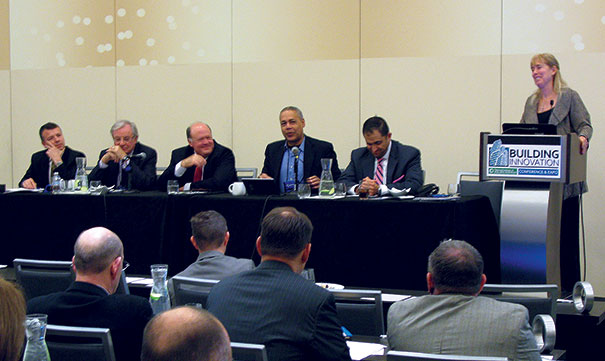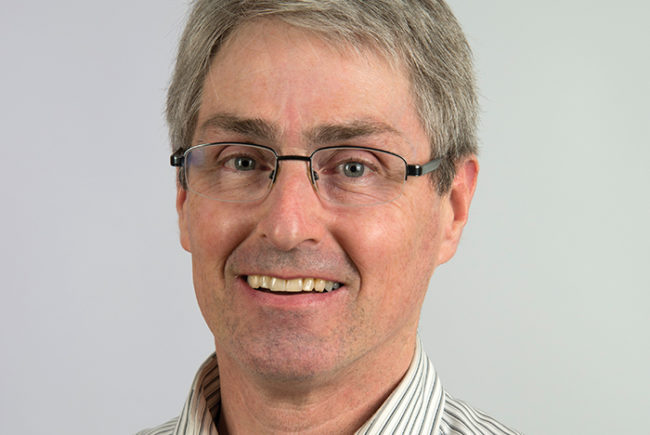 |
|
Photo courtesy of The National Institute of Building Sciences Five teams of experts presented health care infrastructure white papers at the Academy for Healthcare Infrastructure Forum, part of Building Innovation 2016: The National Institute of Building Sciences Conference and Expo. . |
New hospitals and health care facilities built to meet the demands of the modern era of health care will need an infrastructure that is as durable and flexible as the buildings they support.
The Academy for Healthcare Infrastructure (AHI), a program of the National Institute of Building Sciences (NIBS), Washington, D.C., last year established five teams comprising health care industry experts from across the country to identify strategies for achieving those goals.
Each team released its findings and related white papers to an audience of construction and health care field professionals at the AHI 2016 Forum during Building Innovation 2016: The National Institute of Building Sciences Fourth Annual Conference and Expo in January in Washington, D.C.
“The AHI is very pleased with our Collaborative Research Program for 2015,” says Joe Powell, executive director, AHI. “We got participation from the health care system owners we wanted, the subject matter experts we wanted and the academicians we wanted. The result was five white papers that, we believe, represent the best current thinking in the American health care facilities industry.”
Team 1, facilitated by Kirk Hamilton, FAIA, FACHA, professor of architecture at Texas A&M University, College Station, investigated strategies adopted by successful hospital owners in its report called “Owner Organization for Successful Project Outcomes.”
The team identified several themes that consistently arose from interviews with industry experts on strategies for reaching successful project outcomes. “How owners organize their internal decision and accountability structure is perhaps the single most critical element in producing successful project outcomes,” the report states.
Team 2, led by David Allison, FAIA, FACHA, professor and director of graduate studies, Clemson (S.C.) University School of Architecture, explored “Developing a Flexible Healthcare Infrastructure.”
While infrastructure can last from 50 to 100 years, the rate of change in health care is accelerating rapidly, making facility planning a complex challenge, according to the report.
“Therefore, it is even more important that the health care infrastructure built in the future is designed to flexibly accommodate changing needs, including both those that can be anticipated and those that cannot even be imagined,” the report states.
Team 3, led by Rebekah Gladson, FAIA, president, rggroup global, and former associate vice chancellor and campus architect, University of California, Irvine, reported on “Project Acceleration: Speed-to-Market Strategies.”
The report notes that project planning and delivery, risk management and innovation are integral parts of the ability to accelerate project development in an economic manner. Again, the owner and his strategic plan are keys to success.
Any discussion of current issues must be placed in the context of new health care developments and how the next generation of designers and facility professionals address them, according to “Defining the Next Generation’s Focus,” the report delivered by Team 4. Mardelle Shepley, FAIA, professor, Cornell University, Ithaca, N.Y., led the group.
In a report called “Reducing Capital Costs,” Team 5 addressed the nation’s health care spending compared with that of other nations and also how the U.S. can lower costs and still deliver the best care. Dennis C. Bausman, professor and endowed faculty chair, construction science and management department, Clemson University, led the team.
AHI will identify five more topics deemed critical to the advancement of U.S. health care facilities to be covered in reports NIBS will publish in January 2017, Powell says.





